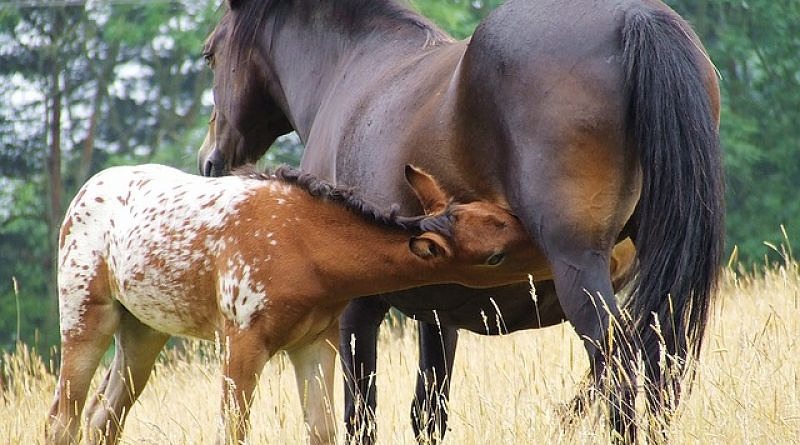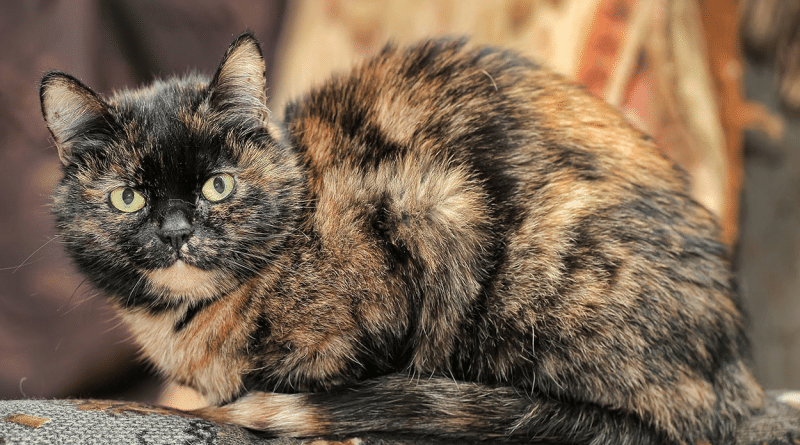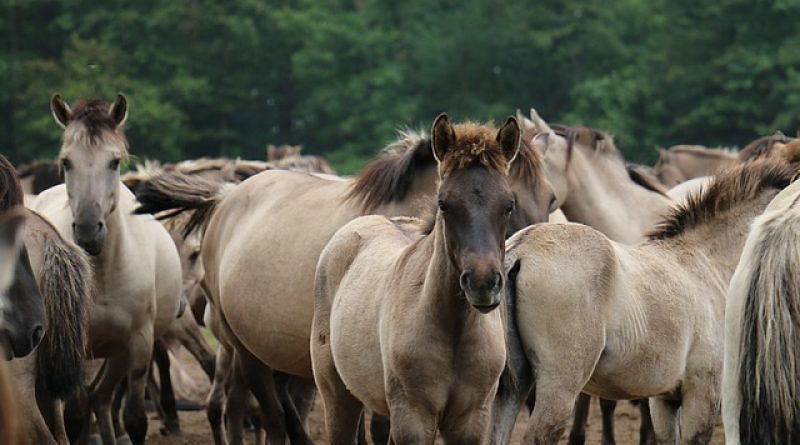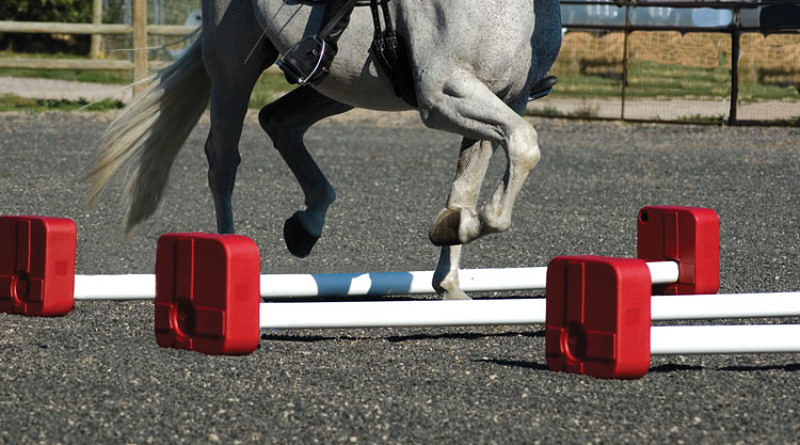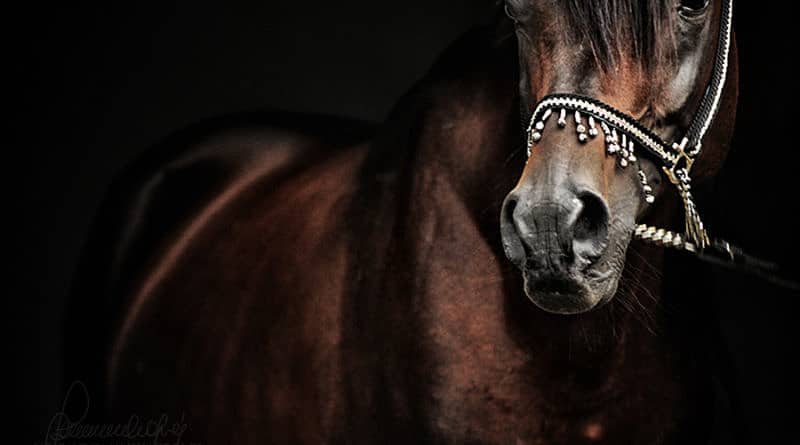Introduction to Genetics 6: Inheritance and variation
How are genes shuffled together in sexual reproduction? Evolution produced a more intricate process than simply mixing everything up!
Previously in this series: Introduction to Genetics 5: Backup copies and chromosome pairs
Finally we have all the pieces in place to tackle what is, for most people, the most interesting topic in genetics – reproduction and inheritance. Everyone knows that we pass on our genes, but only if you have a fairly clear idea of the areas discussed above will you be able to think clearly about inheritance patterns – it is not simply a case of mixing everything up!
The key to understanding sexual reproduction in horses, humans, and many other organisms, is that we have pairs of chromosomes, as we covered earlier. Having paired chromosomes is crucial for enabling offspring to share characteristics with both of their parents. The starting point is two separate organisms – one male, one female. Each organism carries a library of genetic information in their chromosomes, with two copies of each book. The question is, what process has to happen to allow those two parents to mix together all the recipes in their books and produce a new, unique offspring?
You might think, to start with, that they can simply each provide a copy of their whole library, and the offspring can use that. But that would mean that the offspring would have FOUR copies of each book, two from the male, and two from the female. And what would happen in the next generation? EIGHT copies! Before long there will be so many copies that the cell will be bursting with copies – it is clearly not a good long term solution! So what is a better solution?
Well, one way might be for each parent to contribute one copy of each book. This would work fairly well, but the drawback is that the amount of variation over a number of generations is very limited. Why? Let’s take our Muffins, cupcakes and other tasty treats example again, and focus on three recipes ‘Cupcakes’, ‘Blueberry muffins’ and ‘Banana bread’. Let’s say the parents have books like these:
Female copy 1: Cupcake with lemon icing, Blueberry muffins, banana bread
Female copy 2: Cupcake with raspberry icing, Blueberry muffins, banana bread made with salt
Male copy 1: Cupcake with strawberry icing, Blueberry muffins with cinnamon, banana bread
Male copy 2: Cupcake with chocolate chunks, Blueberry muffins, banana bread
The two organisms get together and each donate a copy of one of their books to their offspring. How many different library collections (how many unique offspring) can they produce? Well, they could have Male copy 1 and Female copy 1 (M1F1), Male copy 1 and Female copy 2 (M1F2) etc. So the combinations would be M1F1, M1F2, M2F1, M2F2. Four total possible combinations. In other words, it is not a very flexible arrangement!
This lack of variety looks even worse if you think about the functionality of the offspring. Maybe what the female really liked about the male in the first place was that he knew how to make ‘blueberry muffins with cinnamon’ and ‘cupcakes with chocolate chunks’. She was so happy to find a male with such powers, and she thought that having offspring who could do that would be great as well, and they would be super successful! Sadly for her, with this model of reproduction it is impossible that any of the offspring from this union can make both of those recipes because they are in different copies of the male’s book.
So what would solve this problem? One way would be for both the male and the female, before they reproduce, to get a couple of copies of their books, cut them into different parts, mix the parts together, and then sew them back together again in the correct order. And this, funnily enough, is exactly what happens! Chromosome pairs are joined together with each other so they can mix and match sections of their DNA in a process called genetic recombination. Bear in mind that this is a process that involves exchanging sections of DNA between the chromosomes – not shuffling up the DNA within a chromosome. In other words, you’ll still end up with some combination of the recipes in the original two books in the same order, not some new random recipes.
At the end of the joining and exchanging process the new, shuffled chromosomes are split into separate cells – egg cells in females and sperm cells in males. Each egg or sperm cell has just one copy of each chromosome, instead of the normal two. At a later stage (hopefully after a fun time for the parents!) the two cells are joined together to form a new cell with paired chromosomes, just like the original organisms.
Looking at our male above, it effectively means he can end up donating any set of the recipes that he currently has access to, including a book with the two recipes ‘Cupcake with chocolate chunks’, ‘Blueberry muffins with cinnamon’. Which is excellent! Even with the small number of recipes in the current example, we can easily see that the possible variations will be greatly increased. The female in our example ends up with four different recipe books she can donate, and the male ends up with four, giving us 16 possible offspring. That might not sound like very many, but that is only because there are not many recipes in the book.
Let’s think about a book with 100 recipes, with each parent having slightly different versions of each recipe. If we simply split the books up and give the offspring one of each we can still only have 4 possible offspring. But if we allow the parents to mix up their recipes beforehand then we have 10,000 possible offspring! In reality mammalian genomes typically contain thousands of genes – the number of possible offspring two humans can produce is at the very least in the trillions!
From considering this we can see how it is possible for pretty much any combination of parental alleles (versions of recipes) to be inherited by their offspring. In practice, though, not all combinations are equally likely. One key factor in this process is that, generally speaking, genes which are physically closer together on the DNA molecule in question are more likely to stay together when the mixing and matching stage happens. This is for purely physical reasons.
Imagine you are mixing up two copies of a book. Let’s say you tear each of them up into four pieces – at pages 10, 72 and 113. So you have two versions of pages 1-10, two versions of pages 11-72, etc. You mix them up, and sew them back together. All the recipes on pages 11-72 will be the same as in their original book, even if they might not match with the original recipes on pages 1-10 and 73-113. If you rip the books up on random pages then the closer together the recipes are, the less likely it is that you will make a tear between them.
What this effectively means is that some alleles end up linked together. Due to the precise molecular process involved when recombination happens there is also an impact of exactly where on the chromosome particular genes are located. Broadly speaking, rips in the chromosome are less likely the closer to the centre of the chromosome you get, which means that whole chunks of alleles at the centre of chromosomes tend to be inherited together. When genes are likely to be passed down together we say that these genes are linked.
We’ve seen that paired chromosomes work as both a backup and as a great way of ensuring that new combinations of alleles will be inherited by offspring. This system also has a major impact on exactly how genes end up influencing phenotype.
Think again about the sweet-toothed troll gatekeeper. Let’s say that both of the male’s recipe books have the ‘sugar’ version of the recipe, and that both of the female’s recipe books have the ‘salt’ version. In the male’s cells, the gatekeeper always opens the gate, and in the female’s cells the gatekeeper always keeps the door closed. What about in their offspring? Remember that the father will contribute a book made up of his two copies mixed up. But both his copies have the sweet recipe in, so he will always contribute a book with a sweet recipe. The mother, similarly, will always contribute a book with a salty recipe, because both her copies have the salty version. This means that we know that ALL of their offspring will have one sweet and one salty version of that recipe. The original sweet toothed gatekeeper only cares about getting something sweet, so in ALL of the offspring, the gatekeeper opens the gate.
It is exactly this kind of interaction between two different alleles that results in what we call ‘dominant’ and ‘recessive’ genes! In this particular case, we would say that ‘gate opening’ is dominant to ‘gate closing’, because as long as you have one sweet version of the recipe, the gates will always open. In reality the interactions between alleles is often more complicated than this: ‘dominant’ and ‘recessive’ are just convenient simplifications that predate our modern understanding of molecular biology and the discovery of DNA.
Interactions like this mean that you can’t predict what kind of phenotype offspring will have simply by looking at the parents’ phenotypes – you have to understand what is going on at a genetic level! Offspring can end up having completely different traits to either of their parents, or the contribution of one side will be completely masked by the contribution of the other.
There are two other common terms that are worth knowing about at this point – an organism with two identical versions of a gene (one on each chromosome) is called homozygous for that gene (homo simply means ‘same’) whereas those with different versions of the gene are called heterozygous (hetero just means ‘different’).
Look again at our male and female:
Female copy 1: Cupcake with lemon icing, Blueberry muffins, banana bread
Female copy 2: Cupcake with raspberry icing, Blueberry muffins, banana bread made with salt
Male copy 1: Cupcake with strawberry icing, Blueberry muffins with cinnamon, banana bread
Male copy 2: Cupcake with chocolate chunks, Blueberry muffins, banana bread
We can see that the female is homozygous for blueberry muffins, and the male is homozygous for banana bread. Both the male and the female are heterozygous for cupcakes.
One final complication is the sex chromosome – remember that this is the only chromosome where there are effectively two different possible books, rather than just two variations of the same book. This means there are some genes (recipes) that only exist in males, because only males have a Y chromosome. As a result, there are some phenotypic traits that can only occur in males, because only males have the Y chromosome. The alleles responsible for these traits pass directly from father to son, but do not get passed on to daughters.
This also means that the shuffling around of genes that happens between paired chromosomes (recombination) cannot happen with the sex chromosome in males, because they have two different chromosomes (one X, one Y). Male offspring always inherit the Y chromosome in its entirety from the male parent – there is never any shuffling of alleles between Y chromosomes – and will inherit some combination of X genes from their female parent. Similarly, females will always inherit their father’s complete X chromosome, but this is less of an issue, because they will also inherit another set of X chromosome ‘recipes’ (alleles) from their mother.
Summary
Sexual reproduction involves exchanging sections of DNA between paired chromosomes in both parents.
This shuffling of genes ensures that there is a lot of variety in the specific alleles that each parent contributes to their offspring.
Some genes are more likely to be inherited together because of their position on their chromosome – these are called linked genes.
‘Dominant’ and ‘recessive’ are ways of talking about how the combination of two alleles can affect an organism’s phenotype.
Next in this series: Introduction to Genetics, Case Study 1: Tortoiseshell cat colour

